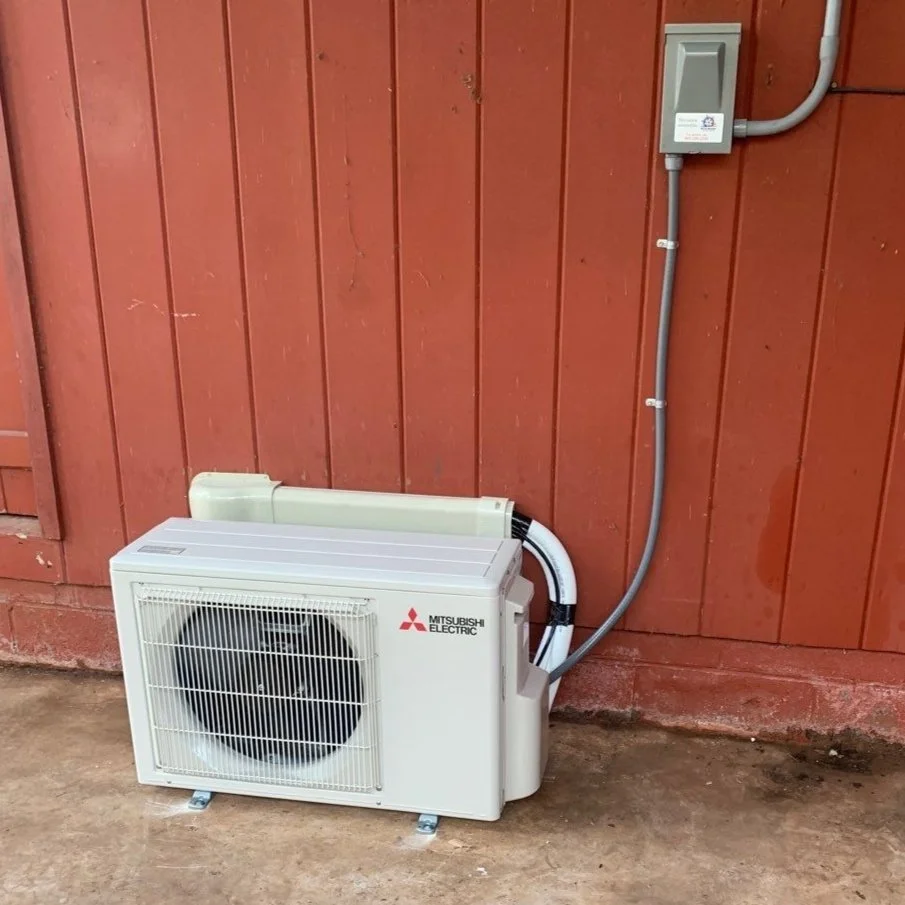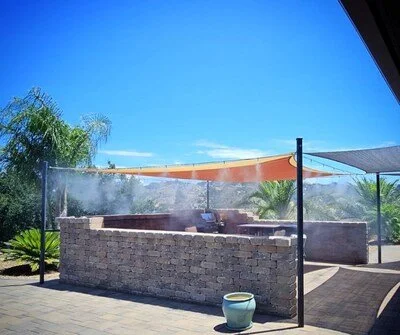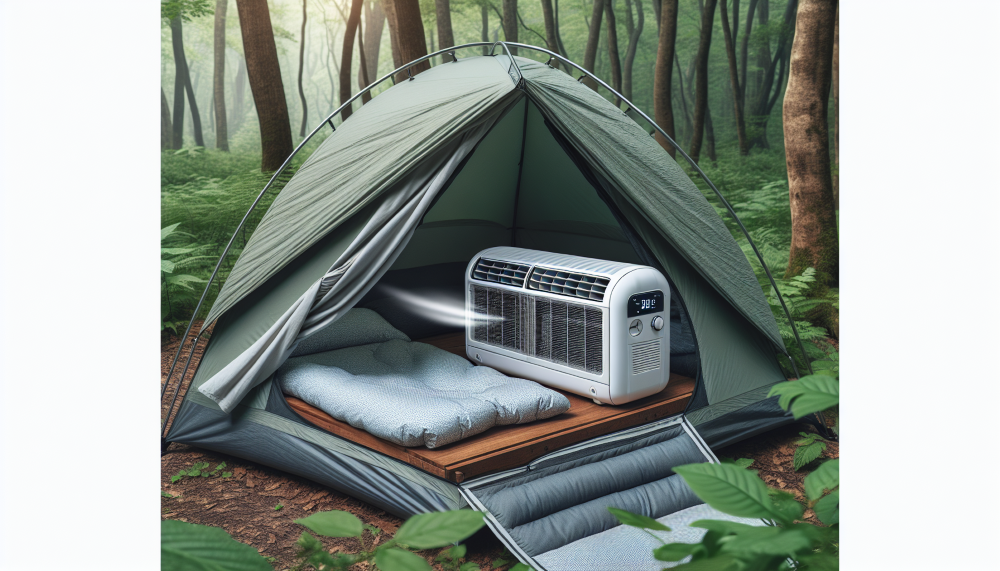Efficient Air Conditioning for Boats
Navigating through the options of air conditioning for boats can be as challenging as sailing through choppy waters. Whether you’re facing blistering heat or needing a respite from humidity, the right marine AC system can turn your boat into a comfortable retreat. This article demystifies marine air conditioning systems, guiding you through choices from self-contained units to advanced chilled water systems, and how they can enhance your boating experience.
Key Takeaways
Marine air conditioning systems not only provide cooling but also comprehensive climate control for boats of various sizes, including self-contained units for small to medium boats, split systems for larger vessels, and chilled water systems for yachts and large vessels.
Selecting the right marine air conditioner means considering the vessel size, layout, and cooling needs, while energy efficiency and the ability to heat and cool using reverse cycle technology enhance onboard comfort and reduce operational costs.
Modern marine air conditioning solutions feature digital control panels for easy operation, environmentally friendly refrigerants for sustainability, and energy-efficient designs that contribute to reduced greenhouse gas emissions.
Understanding Marine Air Conditioning Systems
The meticulous design of marine air conditioning systems turns any boat into a cool oasis, even on the hottest days. Strategically placed discharge grills near the ceiling on a bulkhead allow cold air to gently drop down into the room, enveloping you in a refreshing cool breeze. These systems are so effective that they usually don’t even need return air ducting, as they draw air from their immediate surroundings.
Marine air conditioning systems serve more than just the basic purpose of regular air conditioners. They’re comprehensive climate control systems. They take air, cool it down, and then distribute it throughout your boat, ensuring that every corner of your vessel is comfortable. Imagine being out on the sea on a hot day, but inside your boat, it’s wonderfully cool. That’s the power of marine air conditioning systems.
Types of Marine Air Conditioners
Marine air conditioners vary in size and functionality, they are not a one-size-fits-all solution. They come in various types, each catering to different vessel sizes and cooling requirements. Among the most common types are self-contained units, split systems, and chilled water systems.
Self-contained units are compact and typically the choice for small to medium-sized boats. They’re easier to install and can efficiently manage the cooling or heating demands for boats with up to three cabins.
On the other hand, split systems consist of separate condenser and evaporator units. They offer more installation flexibility and are suitable for larger boats with more cabin space.
Lastly, chilled water systems are used in yachts and large vessels. They employ water as a cooling medium to serve multiple air handlers installed in different cabins.
Cooling Capacities and Boat Size
Choosing a marine air conditioner goes beyond simply selecting the one with the highest cooling capacity. It’s about understanding:
the size of the system required
considering the rooms where climate control is needed, their location, and the load factor the system must handle
a system that is too small will struggle to cool your boat effectively
an oversized system will cycle on and off frequently, leading to increased wear and tear.
Choosing the Right Marine AC Unit for Your Boat
The choice of the right marine AC unit extends beyond merely ensuring a cool boat. It’s about ensuring efficiency and comfort on board. Given the limited space available on boats, marine AC units capable of providing both heating and cooling offer significant space and equipment savings. Additionally, the chosen marine AC unit should prioritize recirculating internal air to optimize cooling, where each pass over the evaporator cools the air by about 18-22°F.
Therefore, the selection of a marine AC unit should take into account factors such as the boat’s size, layout, cooling needs, and the efficiency of the unit’s air recirculation. By selecting the right AC unit, you’re not only ensuring your comfort but also optimizing your boat’s performance and efficiency.
Self-Contained Units
Self-contained marine air conditioners are perfect for smaller vessels. Their compact design allows them to efficiently manage the cooling or heating demands for boats with up to three cabins, making them suitable for a range of small to medium-sized vessels. Models like the 7,000 BTU 12V DC battery-operated marine AC unit from Mabru Power Systems cater to these smaller vessels efficiently.
The less weighty design of self-contained air conditioners contributes to fuel savings by minimizing the additional load on the vessel. But these units are not just about efficiency. They’re also about comfort and convenience. Models like the Integra series offer significant noise reduction, up to 60%, with the inclusion of a sound shield, thereby enhancing comfort onboard by lowering the noise level.
Split Systems
For those with larger boats, split-system marine air conditioners might be the perfect solution. These systems consist of separate condensing units and air handlers, making them suitable for mid-to-large-sized vessels, where they can efficiently cool multiple rooms or large areas.
The separation of the compressor and air handler in split systems offers several benefits:
Reduces noise in living spaces
Saves space in cabin areas
Allows for strategic placement, such as installing the compressor in the engine room
Provides high flexibility in design
Enables independent operation of each air handler, allowing for targeted cooling and increased comfort.
Chilled Water Systems
Chilled water systems are designed for large vessels, utilizing a centralized chiller unit to cool or heat freshwater that is circulated through a piping network to air handlers in different areas. This allows for temperature regulation without being limited by the number of air handlers or distance from the chiller.
These systems are highly customizable and engineered for maximum performance and durability, ensuring they can meet the precise cooling needs of a variety of large vessels. Chilled water air conditioning systems such as CTM Marine CW Chiller Systems are designed with compactness in mind, featuring titanium condenser coils to prevent corrosion and ensure compatibility with various existing controls and cables, like those from Dometic.
Efficient Heating and Cooling with Reverse Cycle Technology
Reverse cycle technology is a game-changer in the world of marine air conditioning. This innovative technology allows for both heating and cooling of a boat’s cabin by using a single appliance. It operates by transferring heat rather than generating it, using the surrounding water as a medium for heat exchange.
The versatility of reverse cycle technology is what truly sets it apart. Whether you’re trying to escape the summer heat or ward off the winter chill, a marine air conditioner equipped with a heat pump and reverse cycle technology can adapt to your needs, delivering the perfect indoor climate at any time of the year.
How Reverse Cycle Works
The key component that facilitates the functionality of reverse cycle technology is the reversing valve. This valve changes the flow direction of the refrigerant to switch between cooling and heating modes. During operation, the reverse cycle system takes advantage of the surrounding water, which serves as a heat source or a heat sink depending on the mode.
In cooling mode, the reverse cycle air conditioner pulls heat from the boat’s interior and releases it into the surrounding water. When switched to heating mode, heat from the water is absorbed and directed into the boat’s cabin. This means that with each pass, the air gets cooler or warmer, depending on the setting, allowing for comprehensive and energy-efficient climate control.
Benefits of Reverse Cycle Marine Air Conditioners
Not only are reverse cycle air conditioners versatile, but they also offer energy efficiency that significantly cuts down operational costs in the long run. The Elite II display allows for easy management of cooling, heating, and dehumidifying, with an automatic setting that maintains the desired climate effortlessly.
These benefits do not end here. The Elite control unit offers advanced features such as a dimmable display and programmable de-icing cycles, enhancing the user’s control over the marine climate. Despite these advanced features, it’s important to note that effective cooling and heating with reverse cycle technology have operational temperature constraints, being less efficient in water temperatures above 32°C for cooling and below 13°C for heating.
Installation and Maintenance of Marine Air Conditioners
While the installation and maintenance of a marine air conditioner may seem challenging, it is manageable with the right approach. With proper installation and maintenance, these systems ensure safety and efficient operation, providing you with a cool and comfortable boating experience. It’s crucial to install the air conditioner in a site that is airtight from the bilge to avoid contamination of conditioned air.
Professional assistance is highly recommended for the seawater intake installation to ensure safety and proper operation. High-quality fittings and valves with dual stainless steel clamps should be used for installations below the waterline. And remember to design condensate drain lines to work by gravity and avoid connecting them to the raw water discharge line.
Proper Installation Practices
Adhering to a few best practices during the installation of marine air conditioners can significantly boost the system’s performance and longevity. The seawater intake for the cooling system should always be located in an area that stays submerged, away from propeller turbulence and devices like depth sounder transducers to ensure consistent operation.
The discharge through-hull should be placed above the waterline, but not more than 15 centimeters above to minimize noise and allow for visual inspection of water flow. The air conditioning unit’s components, such as the blower motor and rotary compressors, should be air-cooled by return air to maximize cooling efficiency.
Due to the challenges in routing insulated lines and the complexity of components, professional assistance is often required when installing split-system marine air conditioners.
Routine Maintenance Tips
Regular and proper maintenance enhances the longevity of your marine air conditioner while ensuring its optimal performance. Regular maintenance activities include:
Cleaning the air filters monthly by vacuuming or washing with plain water to ensure adequate airflow for effective operation.
Checking that the condenser is warm to the touch to confirm proper cooling water flow.
Regularly examining hoses and connections for leaks or signs of deterioration.
Inspect the condensate pan for proper drainage and corrosion, making sure it drains correctly, and shut off the air conditioner when not onboard to prevent flooding and discourage marine growth. These simple maintenance practices can go a long way in ensuring the longevity and efficiency of your marine air conditioner.
Digital Control Panels and Smart Features
Given the advent of the digital age, it is expected that marine air conditioning systems have incorporated technology. Modern marine air conditioners come equipped with digital control panels and smart features that enhance user interaction and control. These features not only simplify operation but also introduce advanced capabilities like automatic humidity control.
MarinAire’s D-Smart systems represent the forefront of marine air conditioning technology with microprocessor-based digital circuit boards. The Elite II control system offers enhanced user interaction through optional CAN-bus adapters for connection to various cabin and helm touchscreen controls.
User-Friendly Controls
The user-friendly controls on the digital control panel facilitate easy operation of the marine air conditioner. These controls offer easy navigation and intuitive menus, ensuring users of all skill levels can comfortably operate the system.
Digital control panels on modern marine air conditioners offer advanced functionality, including:
Displaying crucial information for efficient operation
Flexibility to program the digital display for preferred temperature units (Centigrade or Fahrenheit)
D-Smart control systems that are designed for simplicity and require no further programming after initial setup.
Advanced Features and Customization
Advanced features and customization options are what set modern marine air conditioners apart. Self-contained marine air conditioners offer advanced control features such as illuminated LCDs for easy reading and wireless controls, customizing the system for user convenience and optimal performance.
Integrated humidity control using a humidistat in D-Smart control systems provides the ability for users to set and maintain a specific humidity level, a unique feature that enhances onboard comfort. Remote management of marine air conditioners is enabled by devices like the infrared remote controller and web-accessible controls, allowing for adjustments from various locations on the boat and elevating the user experience.
Eco-Friendly Marine Air Conditioning Solutions
The urgency of addressing climate change and environmental sustainability is unquestionable in today’s world. That’s why modern marine air conditioning solutions prioritize environmentally friendly refrigerants and energy-efficient systems. These systems align with current environmental standards and contribute to reducing greenhouse gas emissions.
Eco-friendly hydrocarbon refrigerants such as R290 (propane) and R600A (isobutane) have the following benefits:
Minimal GWP values of only 3
Rapid temperature recovery, ensuring consistent temperatures with high efficiency
Use of smaller compressors, resulting in lower power consumption and increased energy efficiency.
Environmentally Friendly Refrigerants
The role of refrigerants in the functioning of marine air conditioners is crucial. The Integra series, using R410A refrigerant, illustrates the prioritization of environmental friendliness along with improved cooling efficiency in marine air conditioning systems.
R410A refrigerant is recognized for its non-ozone-depleting properties, enhancing the environmental benefits of modern marine air conditioners. Maintenance processes for marine air conditioning systems are streamlined since R410A refrigerant can be purchased without EPA certification.
As originally posted, with the phase-out of R-22, new marine air conditioning systems have adopted R-410A as the standard refrigerant, marking a significant move towards more sustainable practices.
Energy-Efficient Systems
Energy efficiency plays a pivotal role in marine air conditioning. Energy-efficient marine air conditioners not only reduce energy usage but also minimize greenhouse gas emissions, contributing to environmental sustainability.
Innovative solutions like the AC/DC inverter CTM Marine CT-6S 12VDC allow marine air conditioners to operate on a 12VDC power supply with integrated inverter chargers, enhancing their overall energy efficiency. Despite their high upfront cost, these systems can result in significant energy savings over time, making them a worthwhile investment for eco-conscious boat owners.
Summary
In conclusion, marine air conditioning systems have come a long way, offering remarkable innovations in terms of efficiency, comfort, and eco-friendliness. Whether you own a small boat or a large yacht, there’s a marine air conditioner out there that’s perfect for your needs. With advanced features like reverse cycle technology, digital control panels, and eco-friendly refrigerants, these systems offer an unparalleled boating experience. With proper installation and maintenance, you can ensure these systems serve you efficiently for many years to come.
Frequently Asked Questions
Can you add air conditioning to a boat?
Yes, it is possible to add air conditioning to a boat with the availability of efficient, small, and quiet marine air units in the market. This can be a great option for enhancing comfort onboard.
What are the three main types of marine air conditioning systems?
When selecting a marine air conditioning system, look for three main designs available on the market. These designs are commonly used for boats.
What is reverse cycle technology in marine air conditioning?
Reverse cycle technology in marine air conditioning allows for both heating and cooling of a boat's cabin using a single appliance by transferring heat rather than generating it, using the surrounding water as a medium for heat exchange.
How do I maintain my marine air conditioner?
To maintain your marine air conditioner, you should clean the air filters monthly, check the condenser for proper cooling water flow, and regularly inspect hoses and connections for leaks or deterioration. These activities will help ensure your air conditioner functions properly.
What is a digital control panel in marine air conditioning?
A digital control panel in marine air conditioning allows users to adjust system settings and access important information for efficient operation, including advanced features like automatic humidity control.








